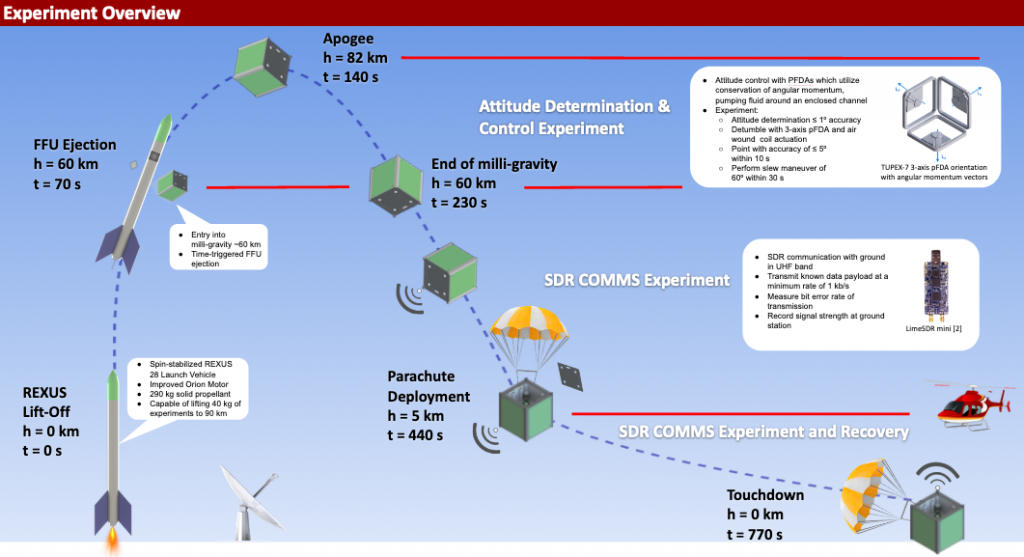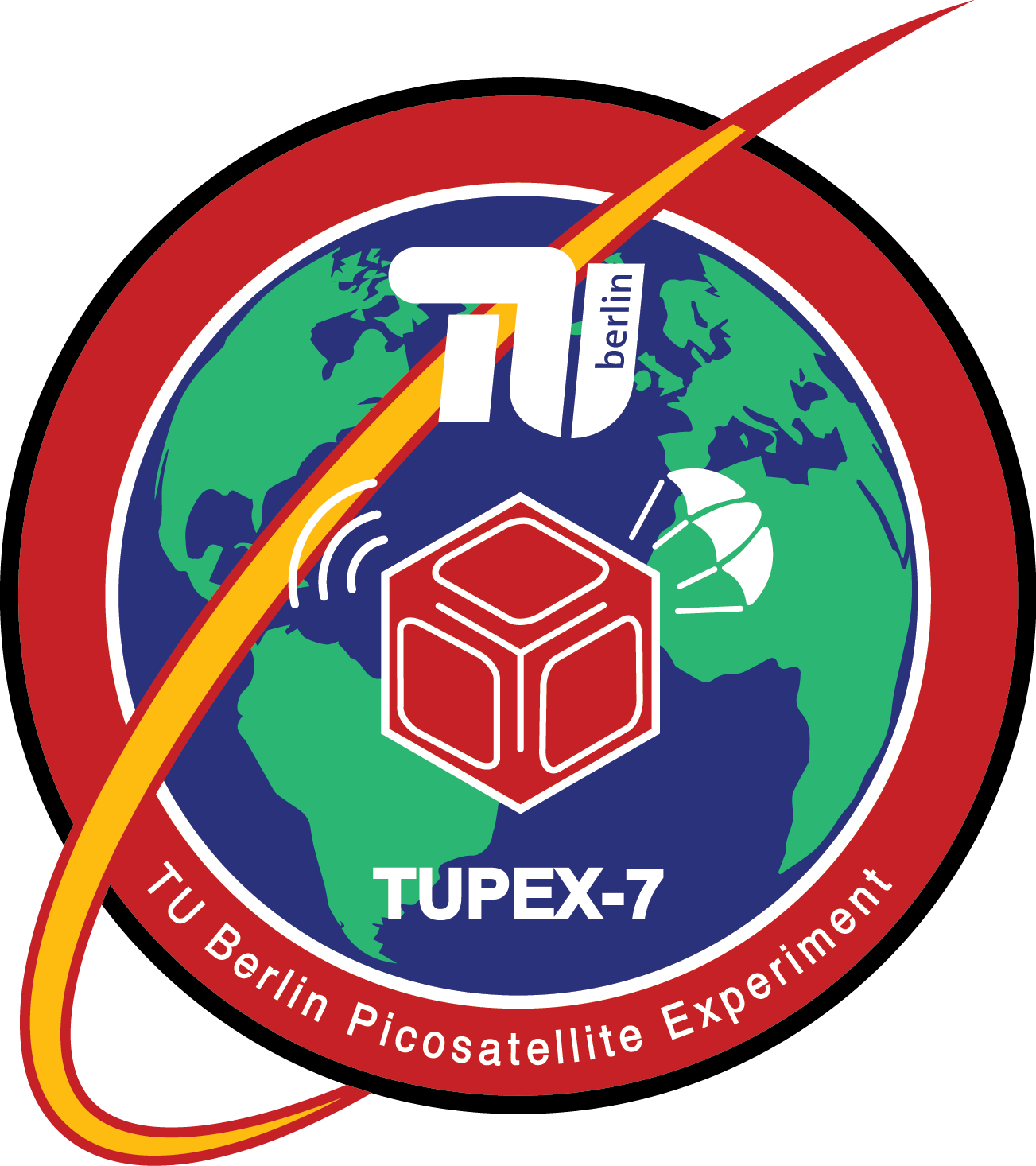
The experiment timeline consists of five phases after launch:
- Pre-ejection. Pre-ejection begins at launch and ends at FFU ejection. During this time housekeeping data such as voltages, currents, and temperatures are transmitted to the ground station from the RBE and FFU via the REXUS Service Module (RXSM). The RBE camera is active and capturing (dark) video which is also transmitted to the ground station via the REXUS TV line. The duration of this phase is about 70s.
- Ejection. The REXUS rocket undergoes a yo-yo despin at about 55km to reduce the angular spin rate of the rocket, followed by motor separation. TUPEX-7 will eject after both of these events to ensure the minimal rotational rate of the FFU at ejection. The pyro cutters on the RBE activate, releasing the steel tension cables restraining the FFU and Experiment Module hatch. The hatch is released and springs in the RBE propel the FFU out of the Experiment Module and rocket. The RBE camera captures the ejection, enabling the team to verify successful completion of the phase. A timer starts on the FFU which will be used later in the free-fall for parachute deployment at the proper moment. Ejection occurs at about 60km. The Ejection phase lasts only a few seconds.
- ADCS Experiment. The ADCS Experiment begins nearly immediately post-ejection as the FFU continues its upward trajectory until it reaches apogee at about 82 km. This phase ends when the FFU leaves the milli-gravity environment on its descent at about 60 km. During the first 60 seconds of this phase the FFU first detumbles, attempting to stop all rotational motion using the magnetorquers. Following detumble, a series of slew maneuvers and pointing exercises are carried out according to a preprogrammed schedule. The HISPs read and record data from the on board sensors which are used to determine attitude. The FFU camera captures video continually throughout the flightwhich is recorded on internal memory cards. This video will be corroborated against the experiment timeline to enable independent verification of attitude control maneuvers. The total duration is 160s and ends 230s after launch.
- SDR COMMS Experiment. The SDR COMMS Experiment begins once the FFU leaves milli-gravity and enters free-fall. The UHF antennas are deployed to initiated the phase. During this time the FFU will transmit a fixed data payload (hereafter referred to as the ”knownpayload”) to the ground station. Assessment of the bit error rate via comparison of the received data against the known data will help determine the efficacy of the communications system. This phase lasts 210s and ends at parachute deployment.
- SDR COMMS Experiment Continuation/Recovery. Using a combination of timer data and pressure sensor readings, the parachute is deployed at approximately 5km altitude. Resistors are heated to melt nylon holding the lid of the parachute compartment in place. Once the lid is released, springs attached to a push plate force the parachute out of its compartment. Post-parachute deployment, the SDR COMMS Experiment continues during which housekeeping data continues to be transmitted. Two separate recovery transmission systems are activated. The first is a GlobalStar STINGR module which uses GPS to provide location data of the FFU to the team at the ground station. The second is a VHF beacon which continually transmits to the ground station, allowing trajectory estimation and aiding in recovery. A team is sent in a helicoptor by ZARM to the FFU location where it is recovered for post-mission analysis.
